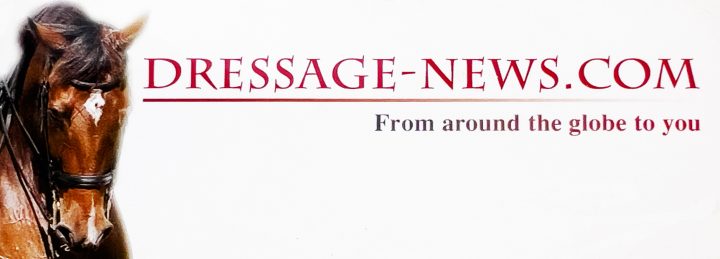Canada Likely to be at World Cup Final for 1st Time in 4 Years
12 years ago StraightArrow Comments Off on Canada Likely to be at World Cup Final for 1st Time in 4 Years

By KENNETH J. BRADDICK
Canada will likely have a rider and horse combination at the World Cup Dressage Final for the first time in four years when the only annual global championship is held at Gothenburg, Sweden in April.
With the last of eight World Cup events in the United States for the 2012/2013 season just two weeks away, the Canadian Olympic combinations of David Marcus and Chrevi’s Capital and Jacqueline Brooks and D Niro fill the top two places in the North American League, one of four divisions that hold qualifying competitions for the Final.
The North American League gets two invitations to the Final that this year will celebrate its 29th anniversary of the event that was created as a Final of the European indoor winter circuit designed around the Musical Freestyle.
David and Chrevi’s Capital, a 13-year-old Danish Warmblood gelding (Chrevi’s Lavallo x Indira Gandhi x Weinberg) have an average from their top two Freestyle competitions of 73.975 per cent while Jacqueline and D Niro, a Swedish Warmblood gelding (D-Day x Alitalia x Napolean 625) is in second place with an average of 72.600 per cent. Canadian combinations also fill the third and fourth places in the rankings.
“I’m keeping all my options open,” David told dressage-news.com. “I’m currently planning a European tour. I’m just not sure where or when it will begin. I’m taking into consideration what’s best for Capital and the rest of my horses.”

Tina Konyot and Calecto V that were on the United States team at the 2012 Olympics in London and the 2010 World Equestrian Games in Kentucky will do her best to break up an all-Canada showing in the Final telling dressage-news.com she intends to ride in the last event in hopes of getting an invitation to Sweden.
Tina of Palm City, Florida, and the 15-year-old Danish Warmblood stallion Calecto (Comeback II x Bahera x Rastell) have one score, 76.775 per cent, the highest of any Freestyle in the qualifiers that consisted of two in Saugerties, New York, one in Devon, Pennsylvania and five in Palm Beach, Florida.
“If my scores are good enough for the Final, I have a few things to take into consideration before making a final decision for competing at the World Cup Final,” she told dressage-news.com. “I would love to go.”
Adrienne Lyle of Ketchum, Idaho, also a member of the U.S. squad at the London Games, received the second highest result, 75.775 per cent, but has not indicated whether she will return to Florida to get another score that could win her an invitation to Sweden.
The last time there was a Canadian at the World Cup Final was at Las Vegas in 2009 when Ashley Holzer competed Pop Art, now retired. Amsterdam in 2006 was the last time a Canadian was in the Final outside North America, when Cindy Ishoy and Proton represented the country.
After the dual World Cup Finals of Dressage and Jumping in 2005, 2007 and 2009 in Las Vegas, the World Cup North American League–the other division are Western Europe, Central Europe and Pacific–has declined in geographic participation.
In 2009/2010 six qualifiers were held in the United States and three in Canada. In 2010/2011 there were six on the U.S. East Coast, two in California and none in Canada. A year later the number rose to seven in the United States, including two in California, and two in Canada.
Entries in several 2011/2012 events were so low–two each in the California qualifiers, four in two Florida shows despite one carrying $50,000 in prize money–that organizers lost substantial amounts of money with five judges and other associated costs, caused to a large extent by a U.S. Equestrian Federation decision to not require Freestyles for Olympic selection.
This season, the number shrank to a total of eight, all on the U.S. Eastern Seaboard, five in Florida alone–none in California and none in Canada.
Oragnizers in California surveyed prospective riders and the feed back was that interest in the World Cup was low, primarily due to a lack of Grand Prix mounts with sufficient experience for a championship with an atmosphere created by indoor competitions seen rarely in North America.
Plus, expenses for North American League combinations are not fully covered as they are for European combinations when the Final is in the United States, the only nation outside Europe to host a dressage World Cup Final.
According to the International Equestrian Federation (FEI) that is responsible for the event, entries from the U.S. and Canada receive 11.000 Swiss francs (US$11,650) per horse and 1,500 Swiss francs (US$1,590) per athlete.
Those payments cover about half the costs and riders without wealthy sponsors who accept an invitation to the Final either pay the difference themselves, raise funds from fans and supporters, go into debt or hope their national federation pick up the tab for the rest of the expenses.

